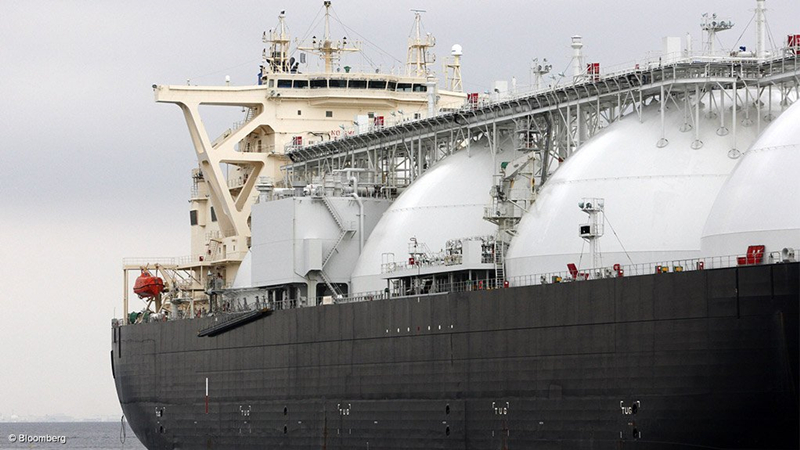
Woodmac noted that Eastern Australia’s gas demand has dropped in recent years, partly due to the pandemic, but primarily as rapid growth in renewable energy displaces fossil fuel-based power generation.
“The energy transition is almost certain to reduce Australia’s domestic gas demand over the long term; the key question is how quickly,” said Woodmac principal analyst on its Asia Pacific gas team, Lucy Cullen.
“To explore this sensitivity and different growth pathways, we developed two scenarios – Slow Burn and Fast Forward. These show gas demand declining up to 60% by 2050, but full decarbonisation remains challenging.”
The Slow Burn scenario sees a higher gas demand world with a more gradual transition to low-carbon energy and greater challenges to decarbonisation. Progress is made, but gas demand remains better supported as infrastructure and power grid constraints, as well as legislative hold-ups, slow the pace of transition. Eastern Australia gas demand is projected to fall 20% from 626 PJ in 2020 to 478 PJ by 2050.
The Fast Forward scenario shows Woodmac’s view of the most plausible scenario based on development plans and progress to date. It sees the continuous transition to a low-carbon future supported by coordinated national and state-level policy, particularly in the power sector, which is projected to be almost 100% low carbon.
The scenario also considers reductions in hard-to-decarbonise non-power sectors, but net-zero goals remain challenging to achieve. In this scenario, Eastern Australia gas demand declines 60%, falling from 626 PJ in 2020 to 245 PJ by 2050.
Cullen said that gas demand remains robust in the medium term, with support from power and non-power sectors. Industrial users target decarbonisation through switching captive power generation to renewables. But continued metals and mining activity and hard-to-decarbonise industrial processes, such as alumina refining, will be slower to shift and require more time and investment to replace gas.
Similarly, the transition in the residential and commercial demand will be more gradual, with demand underpinned by the development of building grid connections. Victoria dominates the residential and commercial sector at state level, with the highest number of building connections and strongest seasonal peak demand in winter.
“The resilience of gas demand in the 2020s is an important driver of East Coast Australia’s looming supply crunch. To prevent significant supply shortages from the mid-2020s, either liquefied natural gas (LNG) imports or new upstream supply are required to offset declining domestic gas production,” said Cullen.
Australia already has the highest penetration of renewables in its power sector in Asia Pacific, but will face challenges replacing retired coal capacity. Significant investments in grid and cross-state interconnection infrastructure are required to unlock additional renewables build. Flexible dispatchable capacity will be critical for system reliability and supporting renewable intermittency.
“Gas power will be vital to managing this transition through the 2030s, as coal capacity halves. Until battery storage technology matures and builds sufficient scale, gas generation will be an indispensable source of flexible generation.
“However, the pace of renewable build, coal retirement schedules, system stability concerns and technology development are highly risked and create the biggest uncertainty to the outlook,” Cullen said.
She noted that Eastern Australia demand was set to structurally decline over the long term, as the energy transition gathered pace and technological, policy-driven and price risk disruptions fast appeared on the horizon.
Industrial gas usage will be increasingly under pressure from feedstock import displacement, low-carbon hydrogen blending and technology improvements, including more efficient heat processes.
Chemicals and fertilisers, as well as captive power generation in the metals and mining sector drive the bulk of reductions. Chemicals and fertiliser users are prime candidates for hydrogen blending which could accelerate post-2040 if the economics continue to improve.
Long-term gas supply availability and price volatility, as well as falling mining reserves and escalating corporate net zero targets, create further uncertainty and downside risk.
In the power sector, gas generation will be increasingly pushed out of the mix as renewables and battery storage technologies mature and become increasingly cost-competitive.
Total electricity demand will continue to rise supported by population increases, gross domestic product (GDP) growth and a warmer climate, but growth in electricity production for green hydrogen will dominate. Cheap renewable power and opportunities to export green hydrogen to northeast Asia will be key drivers for hydrogen development in Australia.
“Renewables’ share in Australia’s power demand is expected to pass 50% before 2030, assuming grid constraints and system stability issues are adequately resolved. Gas’ role in the power mix shifts to peak-load generation in the medium term before renewables and storage completely dominate the mix by 2050,” Cullen said.
“Eastern Australia’s gas and power markets are undergoing a radical transformation and sit at the forefront of Asia Pacific’s energy transition. This creates new and unprecedented risks for Australian gas consumers and producers alike.
“And with a looming gas supply shortfall on the East Coast and five LNG import terminals chasing final investment decisions, sensitivities to the gas demand outlook and critical energy policy inflection points are in the spotlight more than ever.”